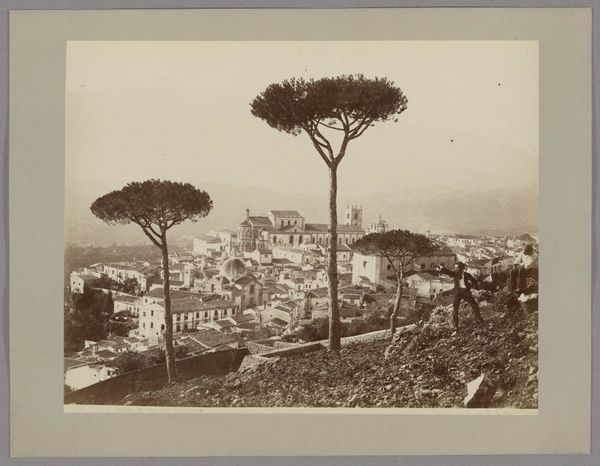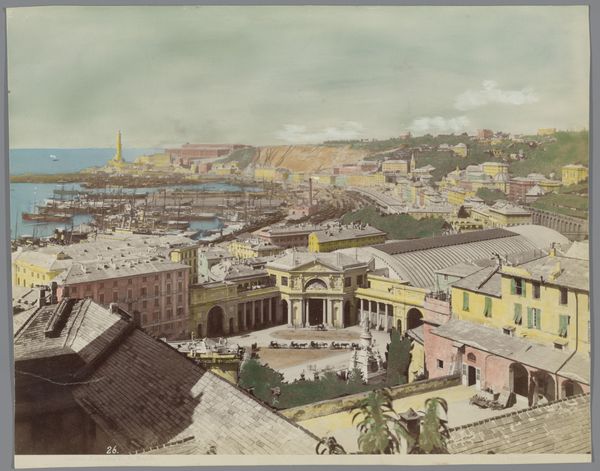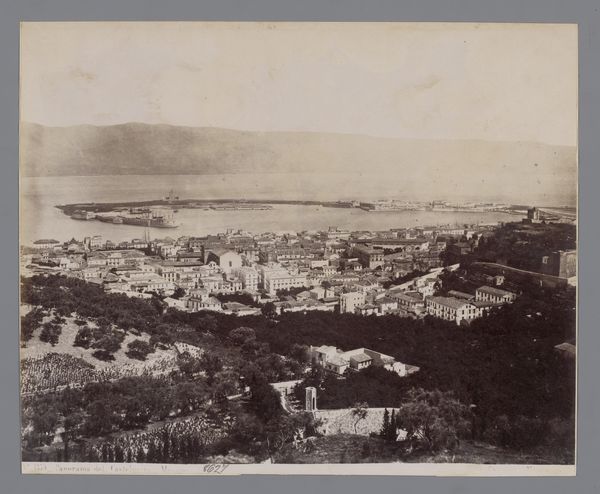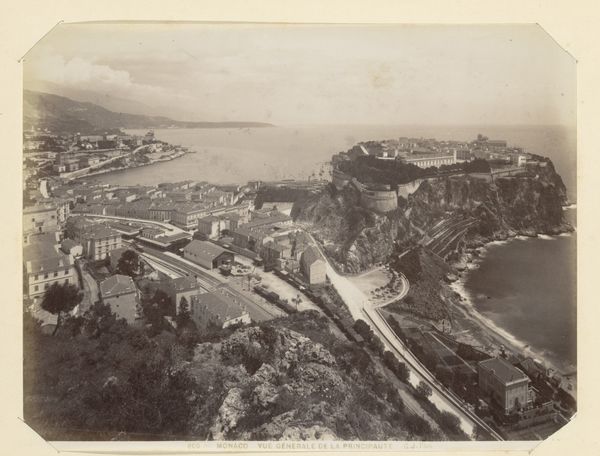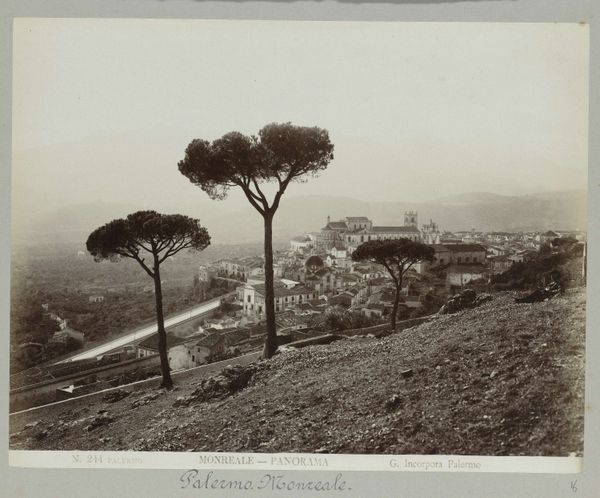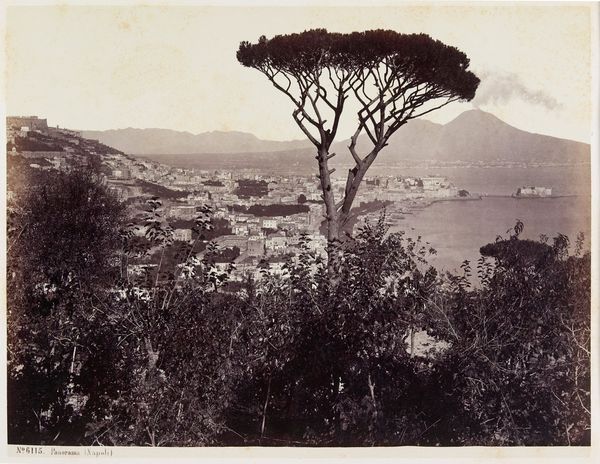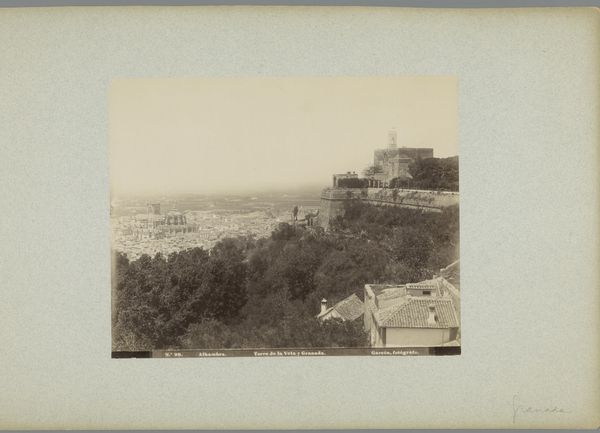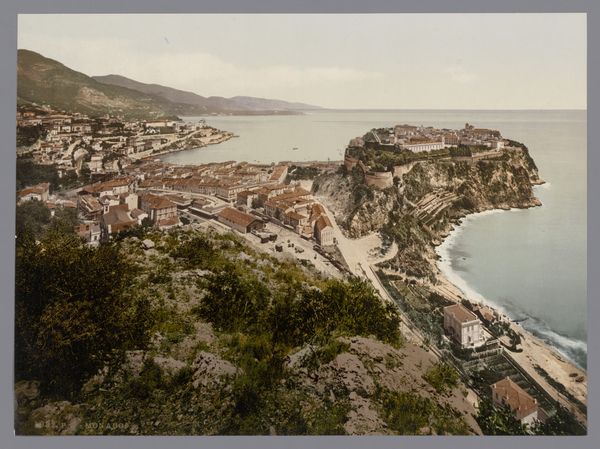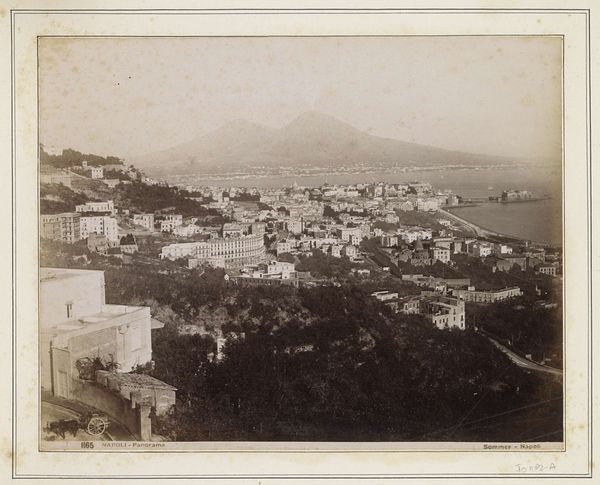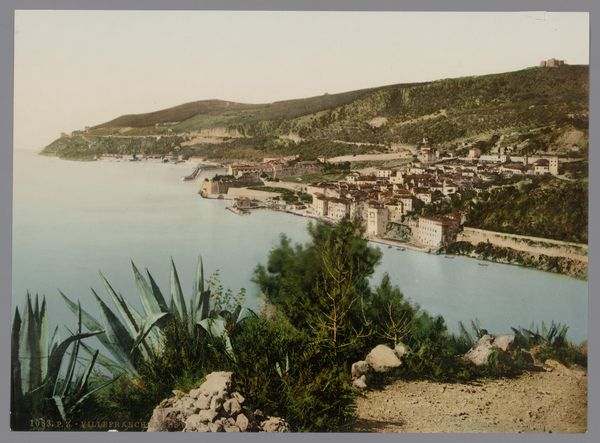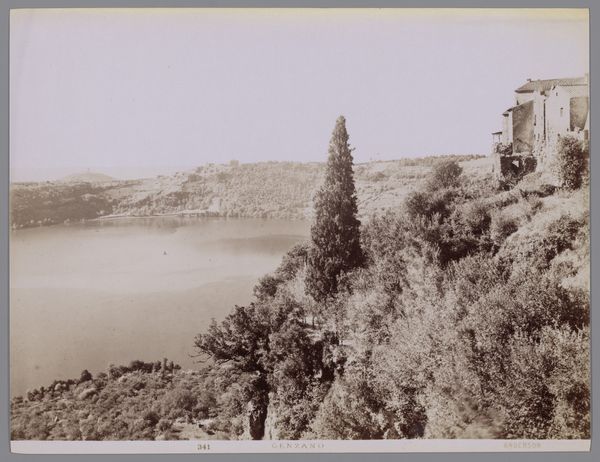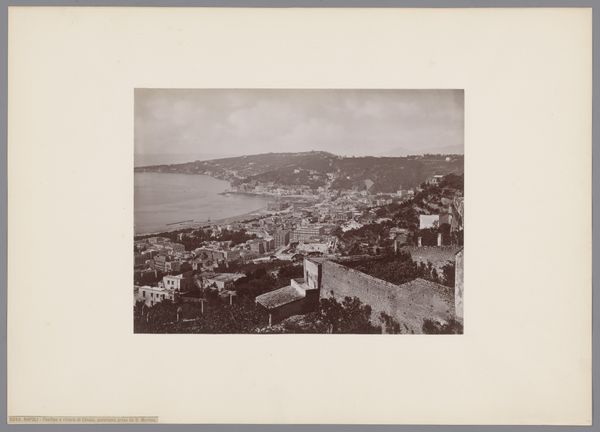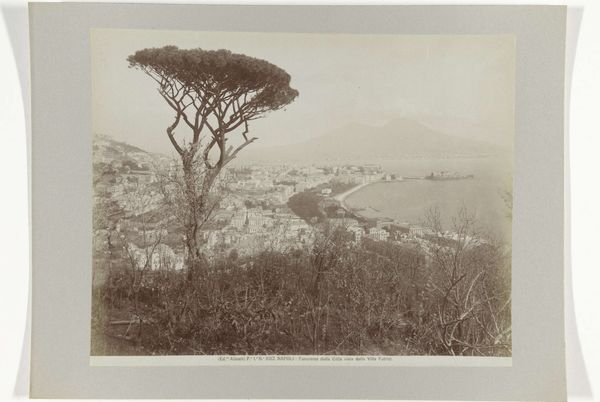
plein-air, photography
#
plein-air
#
landscape
#
photography
#
cityscape
Dimensions: height 200 mm, width 259 mm
Copyright: Rijks Museum: Open Domain
Editor: This lovely landscape is called "View of the Port of Genoa with Two Pine Trees in the Foreground", it’s by Armanino of Genoa, and was produced sometime between 1880 and 1917, employing photography in the open air – "en plein air". It has a wistful, peaceful mood. What symbolic language do you read in this piece? Curator: The paired pine trees dominate, don’t they? Pines are ancient symbols, evocative of both mourning and immortality, enduring strength and shelter. Considering Genoa’s long history as a maritime republic, they might even allude to safe harbor, framing the scene like sentinels or guardians of the city's fate, looking over its activities in global exchange. Do you notice any symbolic features embedded within the architecture? Editor: Hmm, interesting. I can see the tower… a symbol of power? Curator: Perhaps, but power isn’t monolithic. The tower piercing the skyline often signifies aspiration – a desire to reach beyond earthly bounds. Then the harbor itself is an active emblem – what journeys do you imagine? Editor: Well, given Genoa's history, this bustling harbor, even viewed from a distance, speaks to global connections, doesn't it? Of trade, certainly, but also of movement, emigration and immigration and transformation. I didn't pick up on that at first! Curator: Precisely! These visual symbols are active rather than inert, continuously shaped by our interpretations and evolving understandings. So, even a seemingly simple landscape reveals layers of cultural memory, doesn’t it? Editor: Absolutely, that's given me so much to consider about how we continuously breathe new life into the story this image tries to tell. Thanks for your help!
Comments
No comments
Be the first to comment and join the conversation on the ultimate creative platform.
